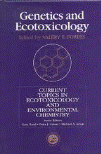Papers in the Biological Sciences

Valery Forbes Publications
Document Type
Article
Date of this Version
1-2012
Abstract
General protection goals for the environmental risk assessment (ERA) of plant protection products are stated in European legislation but specific protection goals (SPGs) are often not precisely defined. These are however crucial for designing appropriate risk assessment schemes. The process followed by the Panel on Plant Protection Products and their Residues (PPR) of the European Food Safety Authority (EFSA) as well as examples of resulting SPGs obtained so far for environmental risk assessment (ERA) of pesticides is presented. The ecosystem services approach was used as an overarching concept for the development of SPGs, which will likely facilitate communication with stakeholders in general and risk managers in particular. It is proposed to develop SPG options for 7 key drivers for ecosystem services (microbes, algae, non target plants (aquatic and terrestrial), aquatic invertebrates, terrestrial non target arthropods including honeybees, terrestrial non-arthropod invertebrates, and vertebrates), covering the ecosystem services that could potentially be affected by the use of pesticides. These SPGs need to be defined in 6 dimensions: biological entity, attribute, magnitude, temporal and geographical scale of the effect, and the degree of certainty that the specified level of effect will not be exceeded. In general, to ensure ecosystem services, taxa representative for the key drivers identified need to be protected at the population level. However, for some vertebrates and species that have a protection status in legislation, protection may be at the individual level. To protect the provisioning and supporting services provided by microbes it may be sufficient to protect them at the functional group level. To protect biodiversity impacts need to be assessed at least at the scale of the watershed/ landscape.


Comments
Published in Science of the Total Environment 415:1 (January 15, 2012), pp. 31-38; doi:10.1016/j.scitotenv.2011.05.057 Copyright © 2011 Elsevier B.V. Used by permission.